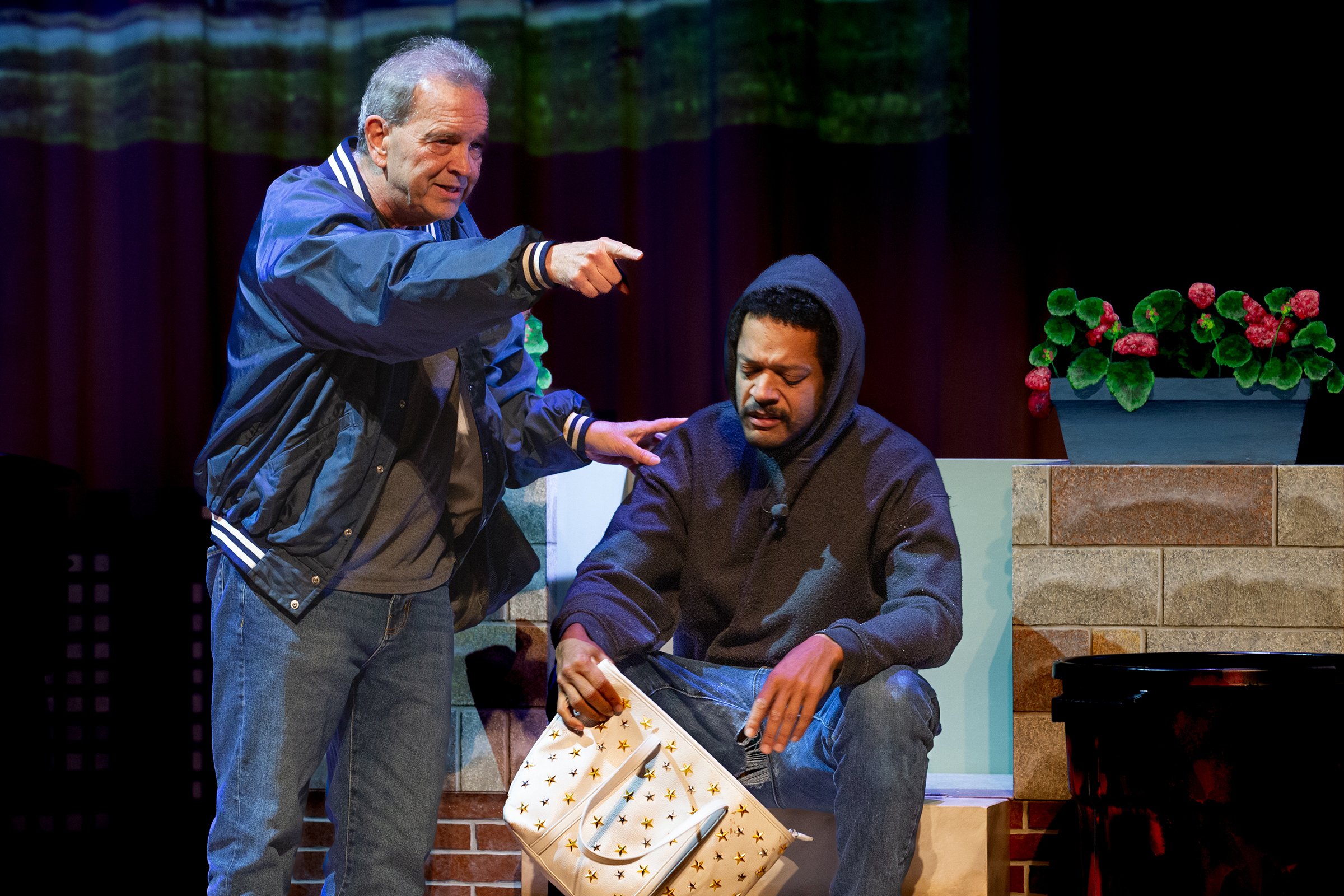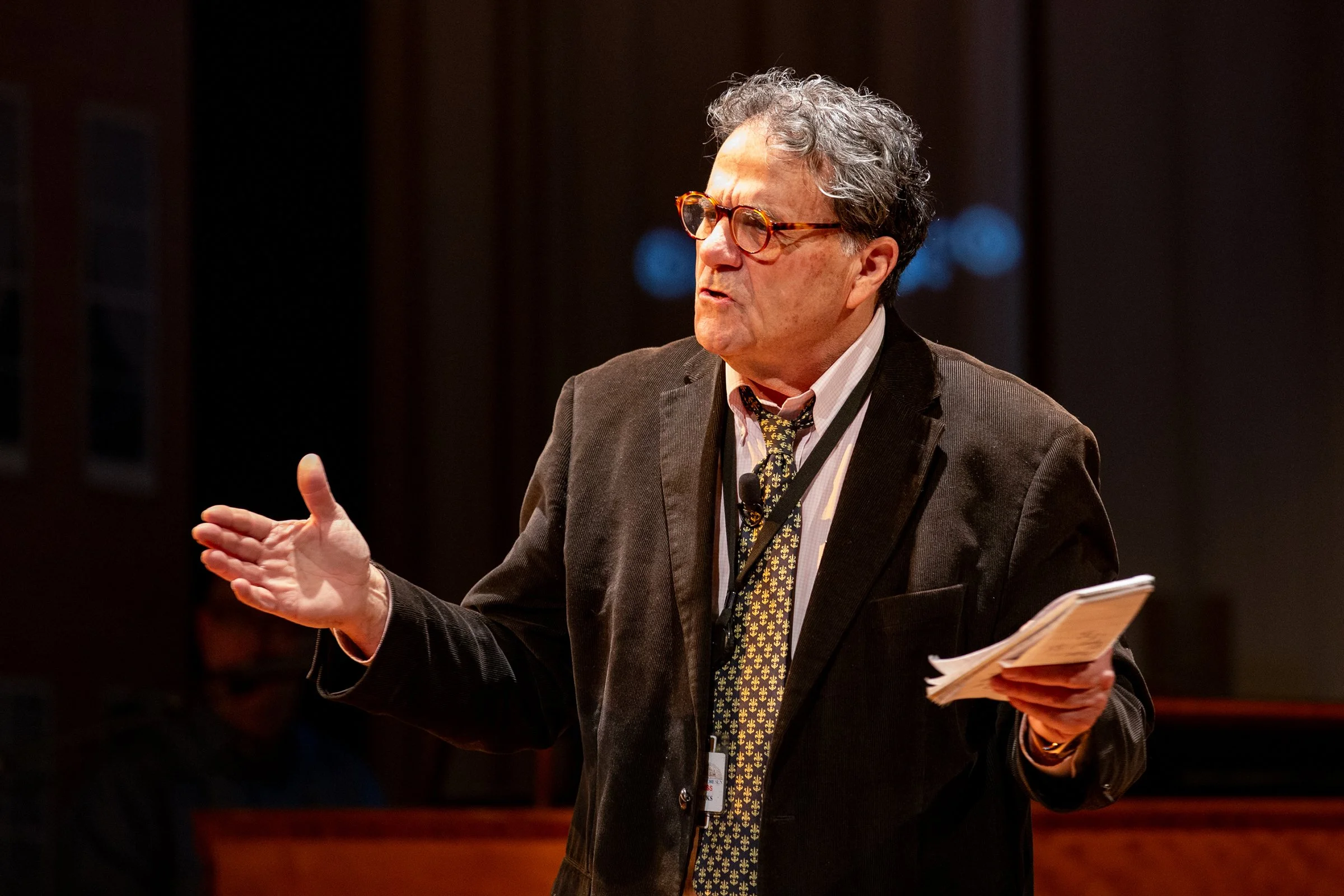Fact Sheet
No Mean City: Baltimore 1966
What to Know
No Mean City: Baltimore 1966
A play written by Dan Rodricks
Show Running Time
Expected time: 90 minutes, with no intermission
Performances
Debut performances March 2026
About the Play
No Mean City: Baltimore 1966
Written by Dan Rodricks
Directed by Vanessa Eskridge
Original music by Mat Lane
Longtime columnist and “Baltimore’s Best Playwright” (Baltimore magazine) Dan Rodricks presents, “No Mean City: Baltimore 1966,” a new play to be performed on March 5-15, 2026 at the Meyerhoff Auditorium of the Baltimore Museum of Art. The play completes Rodricks’ trilogy of plays about Baltimore, informed by his five-decade career as a columnist for The Baltimore Sun.
“No Mean City” is an historic drama set in 1966, the year the Baltimore Orioles won their first American League pennant and World Series. While the city cheered a championship team led by the great Robinsons — Frank and Brooks — racial tensions were heating up, challenging a progressive Republican mayor, Theodore Roosevelt McKeldin, to keep peace in his last hurrah at City Hall.
“No Mean City” is the final installment of Rodricks' trilogy of plays about Baltimore. The first, “Baltimore, You Have No Idea,” was his theatrical memoir, which brought to stage the stories of some of the people he described in more than 6,600 columns for Baltimore’s daily newspaper. The second, “Baltimore Docket,” was based on trials he covered as a columnist over several decades.
About Dan Rodricks
Dan Rodricks is a Baltimore journalist who wrote of one of the longest-running newspaper columns in the country for The Baltimore Sun from January 1979 to January 2025.
He also worked additional local stints as a broadcast radio host, public radio interviewer, morning television personality, podcaster and author of three books.
Most recently, Rodricks has written, produced and performed in two original plays. Based on stories from his newspaper column, “Baltimore, You Have No Idea” (December 2022, 2023 and 2024) and “Baltimore Docket” (February 2024) document a city seemingly in perpetual recovery. Both plays sold out every performance and were enthusiastically received by audiences.
Currently he writes for Baltimore Fishbowl and Baltimore Brew and provides commentary on American life on Substack, a reader-supported content platform featuring strong independent journalism.
Follow Dan’s blog and musings at DanRodricks.com and on social media: Facebook and Instagram
2024 Best of Baltimore: Best Playwright
In August 2024, Dan was named by Baltimore Magazine as best playwright in its annual “Best of Baltimore” issue. As for writing a play (and acting in it), the magazine declared, “Well, turns out The Baltimore Sun’s longtime columnist Dan Rodricks can do it all” with the playwright presiding over it all, “like some larger-than-life Jimmy Breslin.”
Audience Praise for “Baltimore, You Have No Idea”
“The show is a gift.”
— Don Mohler, former Baltimore County executive
“What a wonderful tribute to Baltimore, the city of perpetual recovery. I laughed and even felt a tear towards the end. Great show!”
— Howard Maleson, producer
“We loved ‘Baltimore, You Have No Idea!’”
— Nancy Forster, former Maryland Public Defender
“It was vintage Dan Rodricks — funny, poignant, important.”
— Mike Ricigliano, Ricig the cartoonist
Photo Gallery for “Baltimore, You Have No Idea”
Production Notes
This play tells stories about Baltimore in 1966 that have long been overshadowed by the biggest thing that happened that year: The Orioles beat the Dodgers four straight to win the World Series. It was the first world championship since Major League Baseball arrived in the city 12 years earlier, but its significance transcended sports, coming as it did midst the civil rights era. As if conjured in the cosmos, rather than through an off-season trade, two men named Robinson — Brooks and Frank, one white, the other Black — led the team to the pinnacle.
“The struggle to integrate baseball in general and the Orioles in particular mirrored the fight for civil rights that intensified throughout the country following the end of World War II,” writes baseball historian Bob Luke. “Integration of the Orioles, as was the case with many teams, came slowly. . . . The breakthrough came in 1966 with the arrival of a more enlightened owner, front office staff and African American superstar Frank Robinson.”
More Than Baseball
More than a baseball story, “No Mean City” adds to our understanding of the 20th Century forces that shaped Baltimore — decades of segregation, concentrated poverty, red lining and block busting, white flight, the collapse of big industry and the disappearance of union jobs, decades of opioid addiction, violent crime and the loss of a third of the city’s peak population since 1950. That’s a category 5 storm of social change — a hurricane of history that affected generations of Baltimoreans, and full recovery remains a huge challenge.
Before the Riots
When I arrived in Baltimore at The Evening Sun in 1976, some of the veteran reporters I worked with had covered the 1968 riots following the April assassination in Memphis of Rev. Martin Luther King Jr. Though the assassination sparked the fires and lootings — and marked the beginning of a long period of struggles for the city — I always wondered what Baltimore was like in the years just previous. By 1966, civil rights leaders had been pushing for equality across the city — in public accommodations, in hiring — and they had the help of a progressive Republican mayor, Theodore Roosevelt McKeldin, who was determined to keep Baltimore from collapsing into the unrest that had befallen other cities. But they faced white-hot resistance from long-time Baltimoreans and from segregationists, including the Ku Klux Klan, who came to town in the summer of 1966 to fight efforts to end racial discrimination in housing, restaurants and hotels.
Presidents and Mayors
Hard to imagine in the Trump era, but there was a time when the President of the United States fully supported Baltimore and sent federal dollars to help the city kick-start the Inner Harbor redevelopment. It was President Lyndon Baines Johnson, a Democrat, who in the mid-1960s pledged support for what was then a dream of Baltimore’s last Republican mayor, Theodore Roosevelt McKeldin: Turning the old, industrial waterfront into a bright destination. Such a bipartisan, federal-local collaboration is from a once-upon-a-time America. Fifty years later, in his first term as president, Donald Trump called Baltimore a “rat-infested mess” where “no human being would want to live.” In 2025, Mayor Brandon Scott heard Trump call Baltimore a crime-ridden “hell hole” and threaten to send troops even as the city made significant progress against persistent gun violence. The notion of bipartisan, federal-local collaboration has disappeared, and the Trump administration even signals hesitancy about funding something as vital as a replacement for the collapsed Francis Scott Key Bridge.
Journalist Turns Playwright
“No Mean City: Baltimore 1966” completes a trilogy of plays about Baltimore by Dan Rodricks, who wrote an award-winning local column for The Baltimore Sunpapers from January 1979 until January 2025. The stories are all drawn from newspaper accounts of people, places and events. The first two plays, “Baltimore, You Have No Idea” and “Baltimore Docket” were stage adaptations of columns Rodricks wrote for The Evening Sun and Sun. The storylines of “No Mean City: Baltimore 1966” — about civil rights, the Orioles’ first world championship and the city’s last Republican mayor — are drawn almost exclusively from newspaper accounts of the time. Projected headlines and photographs accompany scenes throughout each play.
“I take some license to build dialogue,” Rodricks says, “because these are not mere re-enactments, based on transcripts or recordings, but plays, with drama and humor. So I can’t call what I’m doing strictly journalism, or even ‘theatrical journalism.’ But the characters and events are all based on my research. We are definitely in the realm of non-fiction. The first two plays are a series of scenes in which I bring some of my Sun columns to life. Audiences for ‘No Mean City’ will see a very close depiction of what transpired in Baltimore in 1966.”
Story Ledes
Other Story Ideas
Who the heck is McKeldin? Turns out, he was kind of a big deal. His impact is seen in Baltimore in the Inner Harbor redevelopment, and a number of social and infrastructure programs intended to bring equity to our city. Dan Rodricks retelling of the impact of this important figure is riveting.
A cast of characters—literally. Dan Rodricks’ latest play, “No Mean City: Baltimore 1966,” brings together a host of Baltimore glitterati. It’s got everyone from “Bob the Vid Tech” (Robert Heck), to a celebrated opera singer (Terriq White), a big band headliner (Larry Noto), a film and BET star (Kay-Megan Washington), an improviser and artist (Jim Meskimen) and more! Dan’s star-power and sincere storytelling attracts the best in Baltimore to deliver the highest quality theatrical production.
How ‘bout dem O’s…in 1966? Diehard Orioles fans will love Dan’s encyclopedic knowledge of the highs and the lows of the O’s. The year 1966 was definitely a high!
Media Ledes
Dan Rodricks is Baltimore’s historian. He’s had a front-row seat to chronicle our City’s most important moments. He brings this deep understanding to audiences in the format of theater, to both entertain and inform, transcending “from the page to the stage”!
Dan Rodricks is the “canary in the coalmine”—he continues to report with sincerity and urgency for several media outlets. He sounds the alarm about the peril of the present moment, as the governments’ structures that have endured for three centuries are under threat.
1966 was a prescient moment where an enterprising Mayor McKeldin successfully tamped down simmering racial tensions…at least for 2 years. Here’s what his legacy, as told by playwright Dan Rodricks, can teach us in the present moment.
For More Information
Website
YouHaveNoIdea.org
Contacts
Laura Farmer, Laura@LauraFarmerMarketing.com
Dan Rodricks, rodricksplay@gmail.com













